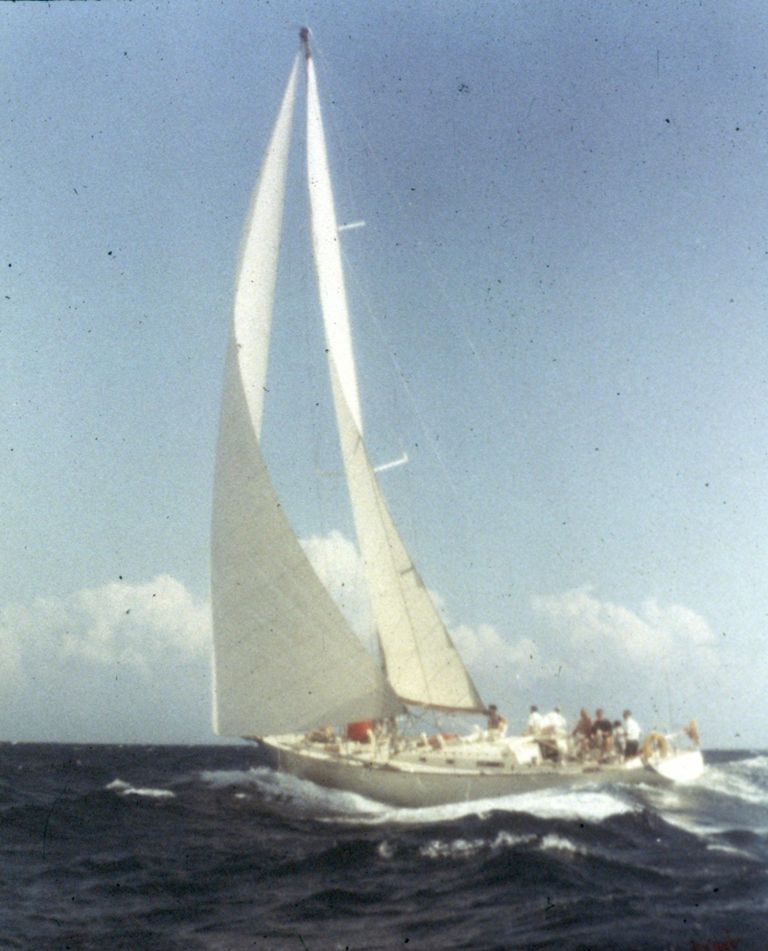Inferno II
LOA: 53' LWL: 39'
Owner or others associated with
McHugh, James ( Jim ) P.
DWG #
65-9
Notes
I had a quick conversation with Rob Mazza who was there for a lot of C&C and also given many talks about and written articles on C&C's history. Here is his letter about Inferno II and Red Jacket Red Jacket, indeed, was built prior to Inferno II, despite the fact that she had an earlier design number. That may well have been because Jim McHugh already had Inferno I, with which he won the Prince of Wales trophy at RCYC in 1965.
Inferno I was built in strip plank cedar by Dick Telford in Florida, and probably raced the POW at RCYC on her way home to Chicago. McHugh returned to RCYC in 1966 with Inferno I to defend the trophy, but was beaten by Red Jacket. It was McHugh who suggested Connolly take Red Jacket to the 1967 SORC, and McHugh sailed on Jacket and supplied half the crew.
Inferno II was launched in time for the 1968 SORC, which Jacket won overall. Inferno II ended up on the rocks entering Lucaya, which put her out of the Circuit and she did not finish well overall. Paul Dzuiban and Larry Scott delivered her back to Chicago, and each independently called it "the delivery from Hell!". She has since vanished off the face of the earth. However, I expect you already knew all that. Yes, Inferno II did have two layers of 1/2" balsa core with a layer of glass between the two layers. Jacket had a single layer of balsa, but had fiberglass "strapping" relieved into the balsa in way of the mast step and chainplates, Both were built on male plugs.
This was the early days of cored construction, and a lot of the balsa core guidance came from a fellow named Alex Lapey from Baltek Corporation in New Jersey. That was one of the reasons I actually went to work for Baltek in 2002. Seemed alike a completion of the circle to wrap up my career in the industry. However, Inferno had thicker core than Red Jacket simply because she was a substantially bigger boat with greater loads. It was easier to conform the core to the curved shape of the hull by putting two thinner layers on rather than one thicker layer.
The "kerfs" in the core would open up too much with the thicker core. However, with Inferno, they eliminated the set in fiberglass strapping. Inferno pounded on the rocks all night, but when they pulled her off next morning she was still bone dry. So, Red Jacket's SORC win that year established Cuthbertson & Cassian as a dominant design firm on the International stage, and Inferno's survival established cored fiberglass construction as a viable and "bullet proof" construction method, and Erich Bruckmann as an exceptional boat builder.
Superior designs well built in cored fiberglass! Remember, at that time successful racing yachts (Dick Carter's Rabbit and Tina, in 1965 and 1966,for example) were still built is steel.
Sorry missing info on source
Year Launched
All rights reserved. Motion Designs Limited
© 2022
We need your consent to load the translations
We use a third-party service to translate the website content that may collect data about your activity. Please review the details in the privacy policy and accept the service to view the translations.


